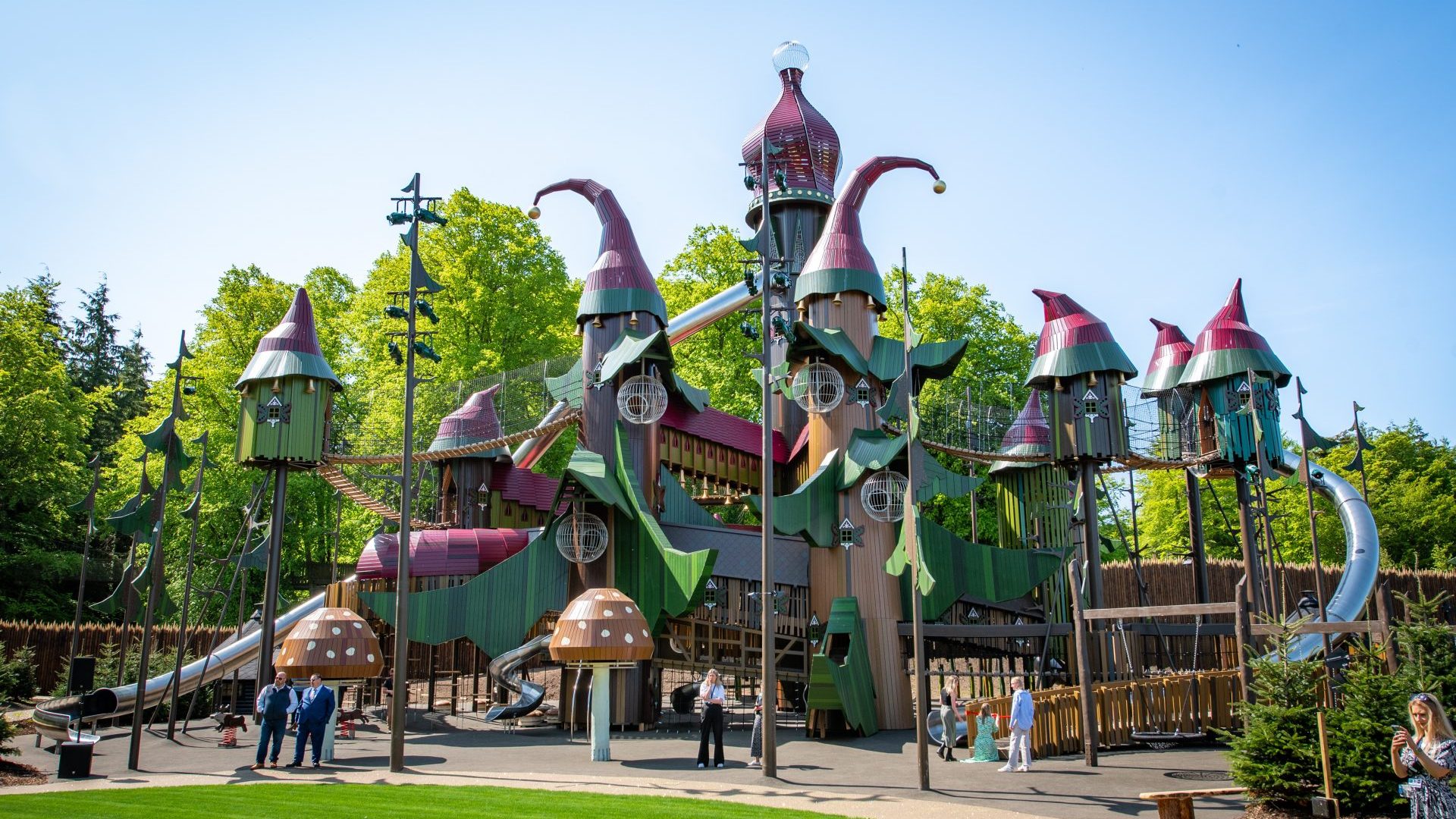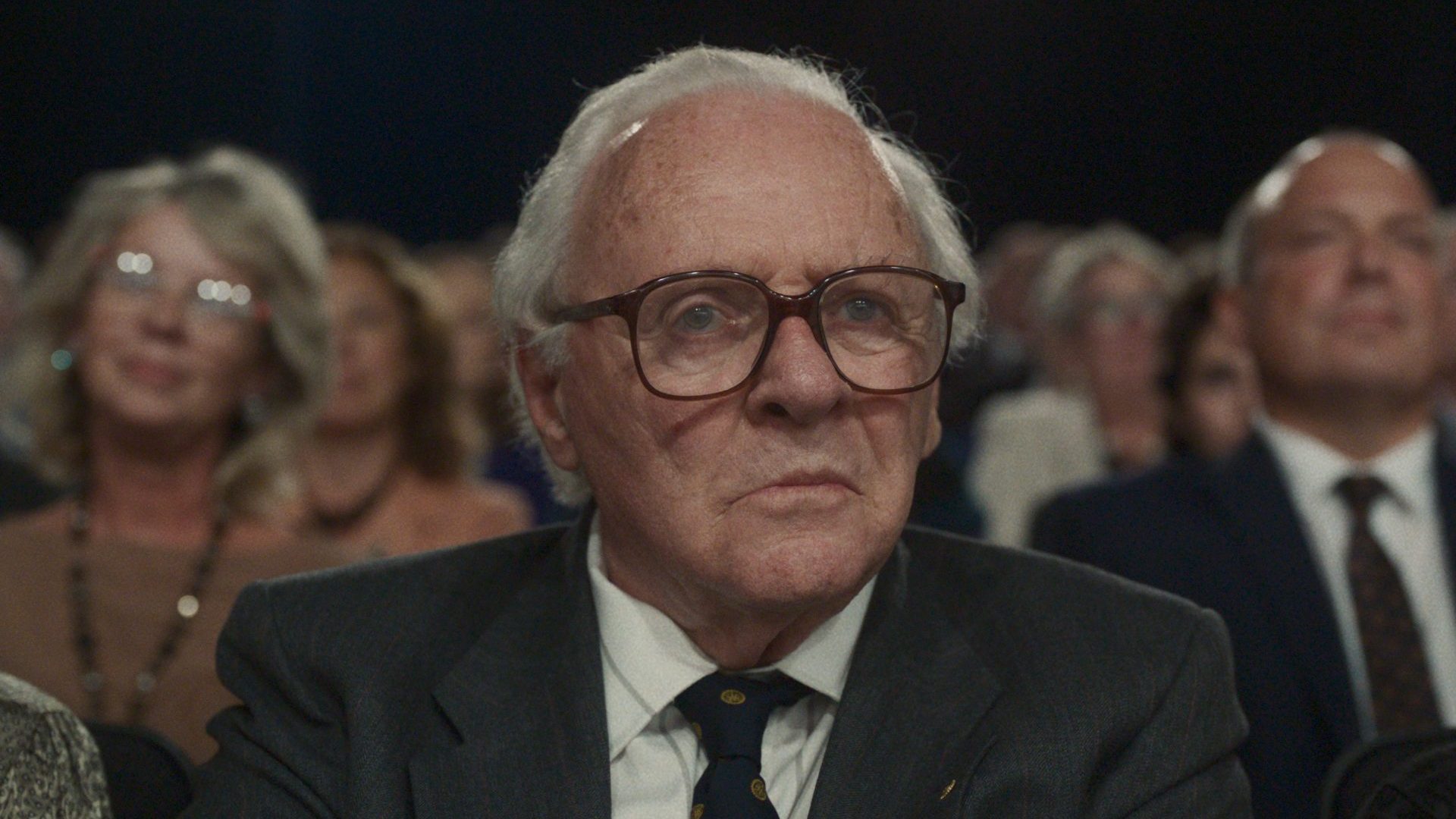There is a classic piece of European design which lurks largely unnoticed on streets the length and breadth of Britain. The “Crazy Hen” playground rocker – a sit-on contraption on a spring in a bold, abstract animal design – was first manufactured by Danish play equipment company Kompan over half a century ago and is still in production today. It will be familiar to any parent or carer who has spent long hours on windswept playground asphalt.
Meanwhile, at Northumberland’s Alnwick Garden, elegant Scandinavian design has met the deranged English imagination in the realisation of Lilidorei, a magical playground which opened to the public this summer. The project is the brainchild of Jane Percy, Duchess of Northumberland, whose eccentricity takes centre stage in the six-part The Duchess and Her Magical Kingdom, currently streaming on Channel 4. Lilidorei’s centrepiece is an enchanted castle built by visionary Copenhagen-based company Monstrum. It is, they say, the largest play structure in the world.
The Crazy Hen and Lilidorei are not just rare incursions of European design excellence into the British landscape, but windows on to a whole history of play where Britain imported the best in playground design from the continent time and again. With the post-war baby boom and rapid urbanisation, playgrounds became relevant in a way they had never been before from the 1940s onwards. At the same moment, architects and visual artists were insisting on “The construction of our environment according to creative laws,” as the Dutch art movement De Stijl had already put it, and playgrounds became the focus of both artistic experimentation and political radicalism. Play, it turned out, could be very serious indeed.
“By education, I’m a visual artist,” Monstrum’s founder, Ole Barslund Nielsen, says from the company’s sleek Copenhagen HQ, “But visual art, some of it anyway, is hard to understand – it’s for the few – but making playgrounds, you can use the same tool and it’s a really nice language. It is talking to your fantasy imagination.” Lilidorei certainly operates firmly in the realm of fantasy. The Duchess dubbed Monstrum’s play structure, with Tolkien-esque flair, Elfwin Drin, the home of the imaginary Lord Elfwin, ruler of the “nine clans of fairies, elves, trolls and hobgoblins.
But Elfwin Drin, with its colossal 24-metre-high central tower, vertiginous slides and intricately whimsical bell-topped hats and red toadstools, is not even Monstrum’s most inventive work, and it is clear that the country that gave us Kompan remains at the vanguard of play today. Monstrum has built more than 270 projects around the world since it was founded 20 years ago, including structures in the shape of two vast seals on a Danish beach, a huge peacock standing resplendent on a roof terrace in Hong Kong, and a 15-metre-long humpback whale near San Francisco Bay. A whole menagerie is planned for Copenhagen’s hyper-modern new children’s hospital which will open in 2026.
Nielsen’s artistic background is the backbone of everything Monstrum does. He was working in set design when he got involved in building a playground for his son’s kindergarten, and that first structure – a rocket and a princess tower crafted in wood – was the blueprint for everything that came after. Monstrum’s “artistic playgrounds that spark the imagination” give the playground experience a whole other dimension, Nielsen says, by using “a visual language that is more than just primary colours.”
Tom Lindhardt, founder of Kompan, also started out as an artist. An abstract expressionist painter, he was once the curator of a 1963 exhibition by the post-surrealist Situationist International in the basement of the first commune in Denmark; it is safe to say he was more than familiar with European artistic radicalism. A few years later, Lindhardt realised that the set of colourful public sculptures he had made for Danish housing estates had become climbable playthings for the children that lived there. Already, in the late 1940s, Copenhagen-born sculptor Egon Møller-Nielsen’s play sculpture Tufsen had set a bar for artistic play structures and Kompan was originally founded with the art-forward name Multikunst Legepladser (Multiart Playgrounds). The Crazy Hen would emerge from this artistically fertile environment.
“I want to be a round detail in a square world,” Tom Lindhardt once said. Similarly contrarian was Dutch architect Aldo Van Eyck. Van Eyck was a disrupter whose humanistic approach to urban planning, partly born of an education at liberal English schools, was at odds with the mainstream modernist thinking of the day. While Le Corbusier advocated for separate spaces for work, living, and leisure in his ideal cities, in real neighbourhoods, Van Eyck argued, these activities went on simultaneously in shared spaces. Between 1947 and 1978 he designed and built 734 “doorstep” playgrounds in Amsterdam, and they were intended to be ultra-local, integral parts of the cityscape. “The tumbling child belongs in the city scene,” Van Eyck wrote, with telling local detail, “just like herring carts”.
Van Eyck’s playgrounds, sparsely furnished with bare rails and low walls, aimed to be entirely unprescriptive about how children used them. “The difficulty with Kompan and Monstrum,” says the University of Sussex’s Professor Ben Highmore, author of the forthcoming Playgrounds: The Experimental Years (Reaktion), “is that if you’ve already turned it into a whale, you’ve forced the child to enter that imaginative world”. He adds: “Van Eyck would see that as taking away from the imagination of children.”
Indeed, Van Eyck wrote explicitly: “If a play apparatus represents an animal from the start it puts an end to pure play”. His compatriot, historian Johan Huizinga, meanwhile, had also been concerned with complete freedom in play in his seminal text Homo Ludens (1938), which contended that play was essential for a flourishing society.
Yet, these later playground designers perhaps share more with Van Eyck than first seems the case. Van Eyck’s friendships with artists like Romanian sculptor Brâncuși influenced him to use abstract and geometric forms for his concrete stepping stones and metal domes. Van Eyck’s playgrounds were also meant to be community spaces; they were not fenced-off, specially designated spaces for children, but for everyone. Monstrum, meanwhile, declares that “a great playground should be a gathering place”. Nielsen also says that the company tries to give children “an environment where they can take chances and fail and learn from it” – perhaps a rather Van Eyckian concept. While only 17 of Van Eyck’s playgrounds are left standing today, something of his spirit clearly lives on.
At the same time Van Eyck was working in Amsterdam, Britain was importing a completely different kind of playground from Europe, and it was one with no interest in the aesthetic at all. The creator of Copenhagen’s Emdrup junk playground, Danish landscape architect Carl Sørensen, wrote: “Of all the things I have helped realise, the junk playground is the ugliest, yet for me it is the best and most beautiful of my works”. The playground was founded during the Nazi occupation to stop children playing in the urban landscape being mistaken for saboteurs, and it proposed a radical alternative to traditional swings, slides and climbing frames. On this piece of wasteland that was entirely their own domain, children could build dens and towers, dig holes in the mud and light bonfires.
Overseeing all this was Emdrup’s remarkable playworker, Johannes Bertelsen. A nursery teacher trained in Froebel’s educational principles, he was also an ex-seaman and former member of the communist resistance, and this background combined nurturing care with masculine adventurousness in a way unthinkable in British society, then or now. Bertelsen’s ethos, like Van Eyck’s, was one of absolute freedom, and he saw his role as facilitating the children to “dare to be destructive”
This vision of kids running wild was surprisingly attractive to the ostensibly genteel figure of horticulturalist Lady Allen of Hurtwood, who was already working with the war’s displaced children and orphans when she visited Emdrup in 1946. Her Picture Post article of the same year, titled “Why not use our bombsites like this?” was the beginning of a vigorous campaign of promotion of the Emdrup model, and an adventure playground opened on the site of a bombed-out church in Camberwell in 1948 was the first of many.
“She had various sayings,” Highmore says of Lady Allen with evident glee, “one of which was ‘better a broken arm than a broken spirit’, which goes down really well with insurance companies.” Indeed, culture war debates over “risky play” have in fact been going on for over half a century, and the Duchess of Northumberland, who Nielsen says insisted that Elfwin Drin have dead ends to ensure kids get lost and frustrated, had a clear forerunner in Lady Allen’s impressive lack of sentimentality.
Brexit may now threaten the importation of European play concepts to Britain, with Nielsen saying that the Lilidorei project had “just been out-of-this-world difficult” because of post-Brexit complications, adding that working in the UK “used to be just like working in another part of Denmark”. But he maintains Monstrum have not been put off coming here. From gritty bombsite playgrounds in the 1940s to the elaborate delights of Elfwin Drin today, playgrounds have been where “the spheres of collective life and of individual life intersect” as Aldo Van Eyck put it, and European thought has shaped – and one hopes will continue to shape – not just how we play, but how we live.




